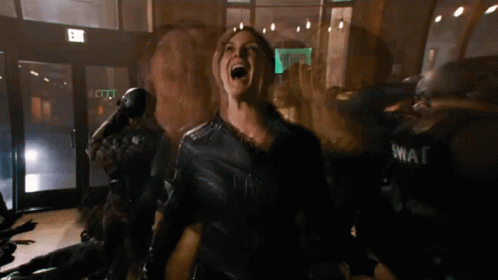***Originally published on my Letterboxd ***
For days I’ve contemplated what I would write here.
It came to me after I returned from the theater. I laid awake in bed repeating in my mind a single, simple phase.
“I hate it.”
Several days passed and I thought eventually I would just write this mantra 100 times in the place of a proper note or observation. It would be like a kind of exorcism, and when I was finished and my Letterboxd entry was up, I would finally be free from this movie’s grey, mottled hand around my throat.
But in good conscience, I cannot simply write “I hate it” and be done. It would technically be true, but it would lack the proper communicative power of something longer and more eloquent.
My thoughts exactly, Tiffany.
Why write anything at all though? Why bother spending any time on this in the first place? Why not go outside and smell the fresh winter air? Why not watch another movie to cleanse my mind and put this suffering to an end?
The truth is that I don’t know. But I am reminded of the Good Samaritan. I hope that in the telling of my misfortune—of my injury—that I can save but one poor soul on the road to Jericho.
The Matrix Resurrections is a bad movie. It is very bad. It is a painful watch. Boring, ugly, and incoherent. Lana Wachowski and cowriters David Mitchell and Aleksandar Hemon have written a story that is significantly less clever than they think it is. Worse, Wachowski has executed on this screenplay with all the style and energy of a third rate Netflix showrunner, smug with their masturbatory end product.
Ostensibly, The Matrix Resurrections is about the toxicity of nostalgia, IP-farm-to-franchise filmmaking, and the way we reckon with our own creations many years after they have wormed their way into the collective imagination. But in truth it is about a guy in a coffee shop who simply cannot get his shit together. I empathize with this guy, mostly because he is played by Keanu Reeves. But that empathy will only carry one so far. There needs to be something worthwhile to carry one through.
It’s hard to isolate the single most grievous sin Wachowski commits in this film, because it is a film built of sin.
My impulse is to say that the film’s greatest form of self-harm is that is hasn’t a single coherent or memorable sequence of action across its entire runtime. Before I saw The Matrix Resurrections, I was certain that we’d all agree a Matrix film would need at least a single sequence of imaginative and well-executed action, whether that be fisticuffs, shoot em ups, vehicular combat, or even a bout of particularly tense spoon-bending. But seeing some of the reviews from critics and folks on Letterboxd, it is clear I was wrong to hold such a view.
No, you see, The Matrix is “about” stuff. And what it is about is much important than how it communicates that stuff to you. The action, the style, the various formal elements used to deliver that stuff—that’s just how you jack in, man.
But, in thinking on it as much as I have, I am now inclined to single out the glorified clip show Wachowski has weaved into the fabric of the entire film. Every dramatic moment, every wink at the audience, every reintroduction of an old character is accompanied by some flashback from previous Matrix entries. Two things happened in my mind whenever these clips surfaced:
The narrative momentum of the scene (and the movie at large)—if such a thing could be said to exist—was halted in the most inelegant manner possible.
I was reminded, with every flashback, how much better the previous three Matrix films were than this one.
It is the visual comparison that hurts The Matrix Resurrections the most. Seeing this new film, it is almost impossible to imagine how Lana Wachowski could have anything to do with the original film or the two that followed. There isn’t a single image in the entirety of this new entry composed with half the artistry of the original trilogy. It is truly baffling.
So I must invoke a new Cinematic Rule. Much like other Cinematic Rules—such as The Rule of Bluntmoney Geography or The Staggs Limit—this rule is not meant to be universally applied. What you must learn is that these rules are no different than the rules of a computer system. Some of them can be bent. Others can be broken. But not without good reason.
I invoke The Clip Show Rule of Cinema. This rule simply states that no director should hamstring their filmic endeavor by depicting within their film (diagetically or otherwise) images of other, better films.
In Star Trek Beyond, when Nu-Spock—having inherited Spock Prime’s belongings—looks upon an old picture of the crew of the original Enterprise (in what appears to be a film still from Star Trek: The Undiscovered Country), The Clip Show Rule of Cinema is being broken. As if Star Trek Beyond didn’t have enough going against it, now we are reminded of a much *much* better film. Never a good note to end a movie on, I say.
Me, deflecting all the bad Resurrections takes (in good faith, of course).
The original Matrix is a singular work of cinema. For better and worse, it defined a moment and created an ethos. To this day it remains one of the great works of action filmmaking; an imaginative, mind-bending science fiction adventure that had many of us wondering if we actually lived inside a computer. Above all else, it was exciting, it was entertaining.
The Matrix Resurrections is not entertaining. It is a presentation of juxtapositions that no artist should want juxtaposed. It asks us to compare and contrast, and in doing so, in the end, it is found wanting. Miserably so.

